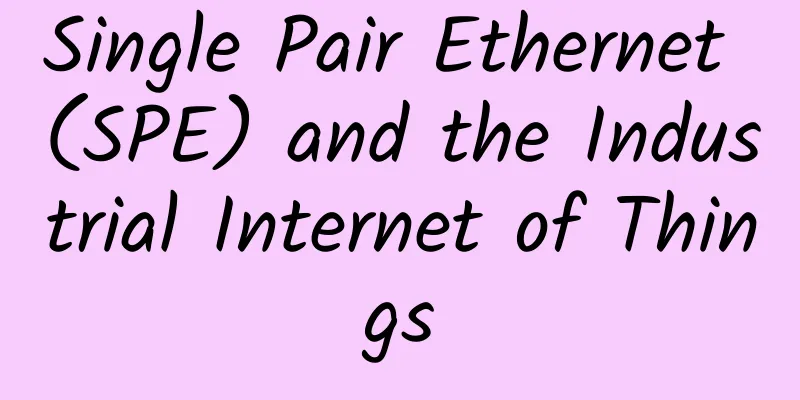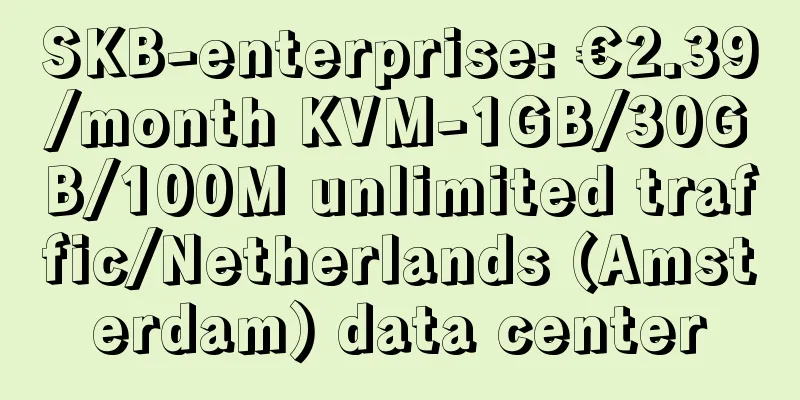Single Pair Ethernet (SPE) and the Industrial Internet of Things

|
While Single Pair Ethernet (SPE) has been around for some time, the road to adoption has not been entirely smooth despite the technology's potential benefits. SPE is gaining momentum in the networking space for a variety of practical and technical reasons, and has particularly relevant attributes for IIoT implementations. Central to SPE's value proposition is that it offers improved performance over existing 4-pair cabling and the traditional IEEE 802.3 Ethernet standard. SPE runs over a single twisted pair and can deliver speeds of up to 10 Mbps over distances of up to 1 km, a significant improvement over the maximum 100-meter speeds of the 10/100/1000BASE-T Ethernet standard. This is achieved through the IEEE 802.3cg Ethernet standard, also known as 10BASE-T1L. The original market for the BASE-T1 standard was the automotive market, but the more recent 802.3cg makes the standard suitable for the smart building and IIoT markets. Power and distance of SPESPE has an operating distance of 1 km, which makes it ideal for implementing industrial IoT over larger areas, requiring less complex network equipment to cover large factories or complete industrial sites. But SPE has another trick up its sleeve, using single-pair powering technology, not unlike PoE, to power devices. While it can only deliver relatively low wattage over PoDL (power over data lines), about 50W over short distances, and gradually decreases over a full 1 km range, it is still advantageous for IIoT devices designed to operate within a low power range. Lighter, thinner, cheaperThe advantages of CAT6 cabling are also significant. A new IIoT project may be expected to install a considerable amount of new cabling. However, since SPE requires only one-quarter of the overall physical cabling (one pair instead of four), costs can be significantly reduced. SPE cable is also only one-quarter the weight and diameter, making better use of existing conduit space and reducing weight support requirements. Finally, SPE can often be run over existing 4-pair copper cabling, further reducing installation costs. Network topology standardizationA key reason for industry interest in SPE is that it offers the opportunity to standardize network protocols across the network. Previously, Ethernet has been the de facto standard for the vast majority of enterprise networks, but this has not been the case at the so-called "field" level, where various BUS systems have become commonplace. Traditionally, one of the reasons for this is that BUS systems only require two pairs of cables, rather than the older 4-pair Ethernet, thus providing significant cost savings when considering the thousands of sensors and actuators throughout an industrial installation. This standardization means that the array of gateways currently required to bridge the Ethernet-BUS gap will no longer be required, which is a relief for those who maintain this often-legacy software. Standardization: Security RisksStandardization does raise a new consideration for future SPE IIoT deployments - security. Legacy industrial automation systems that run serial bus technology effectively isolate field-level devices from the rest of the network. Switching to SPE means that field-level devices will have to undergo the same scrutiny as any other connected enterprise hardware, inevitably requiring occasional OTA (over-the-air) bug fixes, protocol updates, etc. Fortunately, with SPE's bandwidth and power delivery, newer SPE-compliant devices should not be technically limited by the two barriers of traditional IIoT OTA. However, any traditional device may not be so easy to deal with. Pure Ethernet also has the benefit of avoiding many of the security challenges of wireless alternatives, although mainly from the perspective of local interception. Disconnect Connector StandardsThere are other barriers to SPE adoption, in the familiar form of standardization. While SPE and the IEEE 802.3cg Ethernet standard are well established, the problem arises on the connector side, where two different connector implementations are already on the market. Both are standards-based. The SPE Industrial Partner Network promotes the T1 interface defined in IEC 63171-6, while the SPE System Alliance currently supports IEC 63171-2. What lies ahead is far from clear—whether one connector will be accepted across the industry or the two will continue to coexist, perhaps in specific verticals—these questions will be answered in the coming months. SPE Industrial Partner Network members include Harting, TE Connectivity, Hirose, Amphenol ICC and Molex. Meanwhile, SPE System Alliance supporters include Phoenix Contact, Weidmüller and SICK. The two groups also have different focuses, with the network focusing on industrial applications and the alliance taking a broader view of various fields, including automotive and smart buildings. The bright future of SPEClearly, SPE has a lot to offer IIoT deployments, as well as the automotive and avionics sectors. While connector confusion may inhibit adoption in the short term, the long-term outlook is bright. Looking ahead to the requirements of an increasingly connected manufacturing and infrastructure supply chain, it is clear that unified Ethernet, providing robust connectivity and power to IIoT devices, will be a very powerful concept in IIoT deployments for some time to come. |
Recommend
5G and manufacturing advantages: optimism tempered
5G-enabled factories will have the ability to mai...
my country has built 718,000 5G base stations, and 5G+ industrial Internet is developing rapidly
Xiao Yaqing, Minister of Industry and Information...
Ministry of Industry and Information Technology: my country has built and put into operation a total of 1.425 million 5G base stations
At 10 a.m. on January 20, 2022, the State Council...
Token: How to reduce the traffic pressure of user identity authentication?
Many websites usually use the Session method to i...
SpartanHost large hard disk VPS restock, 1TB disk 10Gbps bandwidth monthly payment from $6
Those who need a large hard disk VPS or storage V...
6 solutions to the problem of no Internet access in Docker containers
Note: The following method is a solution that all...
On the "Kung Fu" of IT Operation and Maintenance
One day, Master Ma was walking on the street and ...
Ruijie launches the new generation of smart classroom "A Good Class" to activate education informatization 2.0
On April 2, Ruijie Networks held a new product la...
my country has built more than 2.93 million 5G base stations, and the number of 5G mobile phone users has reached 676 million.
July 19 news, at today's State Council Inform...
European countries are intensively carrying out 5G spectrum auctions: Why the cost differences are so different
Compared to Italy, Austria's 5G sales look li...
What is 10Gb Ethernet
Ethernet is a technology used to connect various ...
NGINX Official Test Center was established to release exams and certifications to provide skills upgrade for Chinese NGINX users
On April 8, 2021, the NGINX Official Authorized C...
What went wrong with HTTP/2? It’s about to be deprecated after just two years of success! ?
[[357747]] There has been a lot of news about HTT...
V5.NET: 30% off for first order from new customers, Hong Kong E5 server as low as HK$385/month
V5.NET is a business that provides independent se...
Now is the time to use 5G indoors
Operators have made huge investments in 5G RAN, w...









